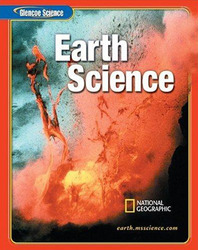Glencoe Earth ScienceUnit 6:
You and the EnvironmentWebQuest ProjectsRECYCLING PLASTICS Introduction In this WebQuest, students do some Internet research on plastics and the recycling of plastics. Students learn about the history of plastics and about the chemistry of plastics.
They find out about the different classes of plastics and what each class can be used for. They also find out what kinds of items each type of plastic can be recycled into. Finally,
students prepare a table that gives the coding system for recycling plastics as well as the material and abbreviation used for each type of plastic. They complete the table with information
they gathered from the web sites given. Top
Task Students will complete a table about the recycling of plastics. They will have to find this information by exploring many of the web sites listed on the student pages. Each web site
has some of the information they will need to complete the table. Students should be able to sift through all of the information available to identify pertinent details for their tables.
From their Internet research, students should be able to list more than one item in each of the categories in the table. Objectives - Research the history and chemistry of plastics.
- Identify the seven types of plastics by code number, material name, and abbreviation.
- List the items that are made from each type of plastic, as well as the items that can be made by recycling each type of plastic.
Top
Time 1 class period for research and filling in the table Top
Process As students work through the list of web sites, you may help them to focus on what they need to know to fill in the table. Several of the web sites have links to other web sites with
relevant information. If time allows, you may want to allow students to explore this subject further. The chemistry of plastics may be a good subject for an independent study project;
however, polymer chemistry is complicated and should be explored by higher level chemistry students only. Any level of student may be interested in learning more about the history
of plastics, especially as it is filled with accidental discoveries and mistakes that led to plastics such as Teflon and Silly Putty. Top
Evaluation Evaluation of student work will depend upon the extent of the material listed in their tables. Students should have no trouble listing the seven types of plastics and their acronyms.
However, they should list at least one item under the heading "how normally used", and at least one item under "can be recycled as". Students who provide a more comprehensive list under
any heading may have points added to their total score as long as all other criteria have been met. You may use the table below to score student work. Table 1. Recycling Plastics | Code | Material & Abbreviation | How Normally Used | Can Be Recycled As | | 2 | 2 Polyethylene teraphthalate,PET, PETE | soft drink bottles | soft drink bottles, paint brushes,
carpeting, egg cartons
| | 2 | High density polyethylene
HDPE | milk and water jugs | toys, milk and water
jugs, traffic cones,
detergent bottles, trash cans
| | 3 | Vinyl/Polyvinyl chloride,
V/PVC | cooking oil bottles,
shampoo bottles,
clear food packaging | floor mats, pipes, hose | | 4 | Low density polyethylene,
LDPE | container lids, bread and
grocery bags | trash can liners, grocery bags | | 5 | Polypropylene, PP | ketchup bottles, margarine tubs, medicine bottles | paint buckets, ice scrapers, mower wheels, auto battery |
Once students have completed the table, you may wish to use the rubric below for scoring. Scoring Table 1. Recycling Plastics | Table Presentation Rubric | Possible
Points | Self-
Assessment
| Teacher
Assessment | | Material listed for each code number | 7 | | | Abbreviations listed for 6 code
numbers
| 6 | | | At least one item listed for each
code under how normally used
| 6 | | | At least one item listed for each
code under can be recycled as
| 6 | | | Add 1 point for each extra item listed
under how normally used up to 5
| 30 | | | Add 1 point for each extra item listed
under can be recycled as up to 5
| 30 | | | | Total Possible Points | 85 | | |
Top
Conclusion Students should be able to fill in the table. They should be able to support their answers with information gathered in their Internet research. Finally, students should be able to
compare the status of plastics recycling with the recycling of glass, paper, and aluminum. Top
 | 




